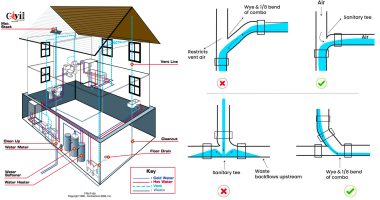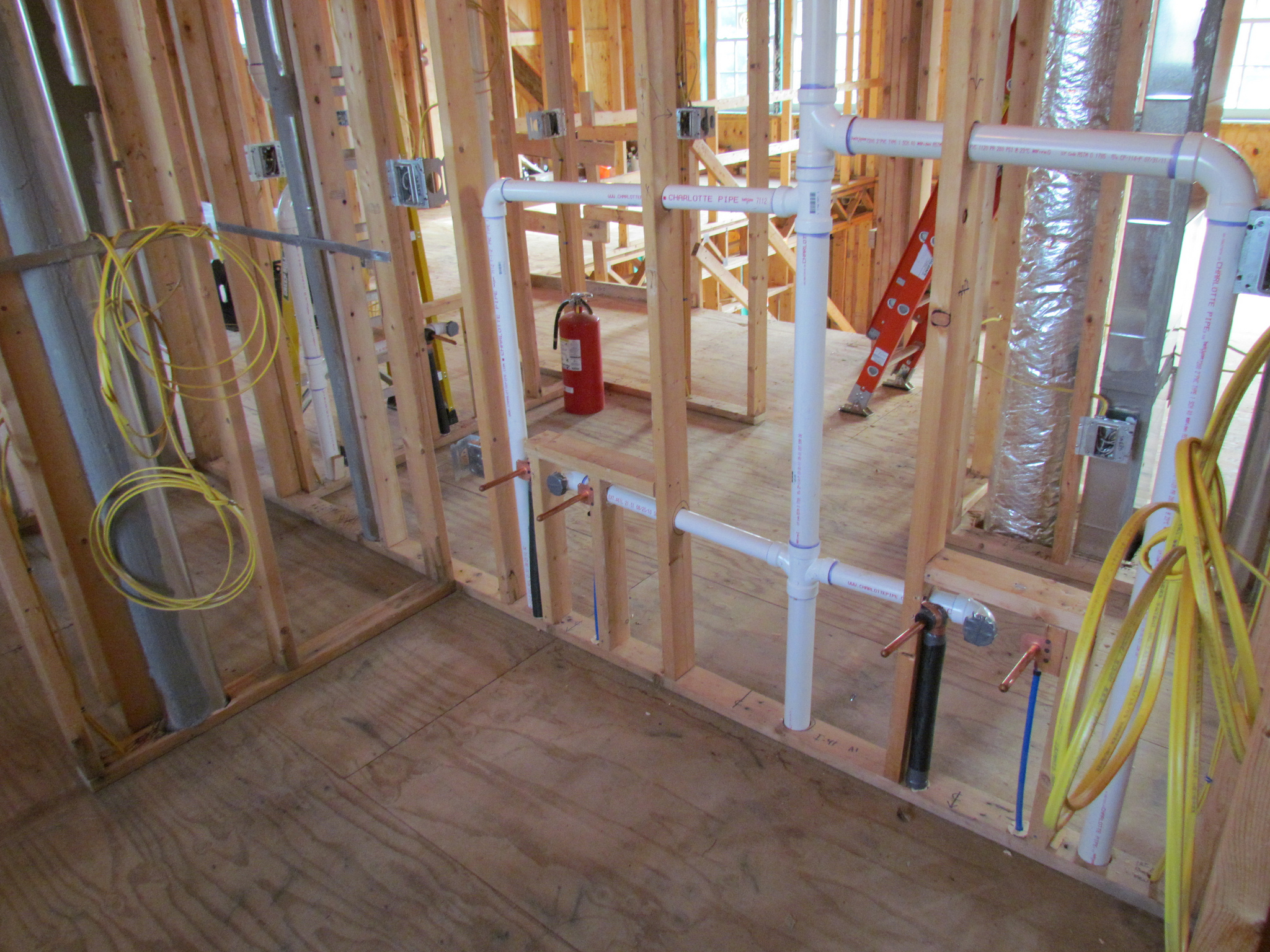Important Parts of Your House's Plumbing System
Important Parts of Your House's Plumbing System
Blog Article
Listed here on the next paragraphs you might get a good deal of awesome content about Plumbing Installation 101: All You Need to Know.

Recognizing just how your home's pipes system functions is essential for every homeowner. From delivering tidy water for alcohol consumption, food preparation, and showering to securely eliminating wastewater, a well-kept plumbing system is important for your family's health and comfort. In this thorough overview, we'll explore the intricate network that comprises your home's plumbing and deal pointers on maintenance, upgrades, and handling typical issues.
Introduction
Your home's plumbing system is more than simply a network of pipelines; it's a complicated system that ensures you have accessibility to tidy water and effective wastewater elimination. Understanding its components and how they interact can assist you protect against pricey repair services and guarantee everything runs efficiently.
Fundamental Components of a Plumbing System
Pipelines and Tubing
At the heart of your pipes system are the pipelines and tubing that lug water throughout your home. These can be made from different materials such as copper, PVC, or PEX, each with its benefits in terms of resilience and cost-effectiveness.
Components: Sinks, Toilets, Showers, and so on.
Fixtures like sinks, toilets, showers, and bath tubs are where water is utilized in your home. Recognizing exactly how these components link to the plumbing system aids in identifying problems and preparing upgrades.
Valves and Shut-off Factors
Valves control the circulation of water in your pipes system. Shut-off valves are vital during emergencies or when you need to make fixings, enabling you to separate parts of the system without interrupting water circulation to the entire residence.
Water System System
Main Water Line
The primary water line attaches your home to the community water or a personal well. It's where water enters your home and is dispersed to different components.
Water Meter and Pressure Regulatory Authority
The water meter actions your water usage, while a stress regulatory authority makes sure that water flows at a safe stress throughout your home's pipes system, preventing damage to pipelines and fixtures.
Cold Water vs. Warm water Lines
Understanding the distinction in between cold water lines, which provide water directly from the major, and warm water lines, which carry heated water from the hot water heater, aids in troubleshooting and preparing for upgrades.
Drainage System
Drain Piping and Traps
Drain pipelines lug wastewater away from sinks, showers, and bathrooms to the sewage system or septic tank. Traps protect against sewer gases from entering your home and also trap particles that could cause blockages.
Air flow Pipelines
Air flow pipelines enable air right into the drainage system, stopping suction that can reduce drainage and cause catches to vacant. Correct air flow is important for preserving the stability of your pipes system.
Importance of Proper Drainage
Guaranteeing appropriate drain stops back-ups and water damages. Consistently cleaning drains pipes and keeping catches can protect against pricey repair work and prolong the life of your plumbing system.
Water Heating Unit
Types of Water Heaters
Water heaters can be tankless or typical tank-style. Tankless heaters heat water on demand, while tanks save warmed water for prompt usage.
Exactly How Water Heaters Attach to the Pipes System
Comprehending exactly how water heaters connect to both the cold water supply and warm water circulation lines aids in identifying problems like inadequate hot water or leakages.
Upkeep Tips for Water Heaters
Frequently purging your water heater to remove sediment, examining the temperature level settings, and inspecting for leaks can expand its life expectancy and enhance energy performance.
Usual Plumbing Problems
Leakages and Their Causes
Leakages can take place because of maturing pipes, loose fittings, or high water pressure. Resolving leaks promptly prevents water damages and mold development.
Blockages and Blockages
Obstructions in drains and toilets are commonly brought on by flushing non-flushable items or a buildup of grease and hair. Using drain screens and bearing in mind what decreases your drains pipes can stop obstructions.
Indicators of Pipes Issues to Watch For
Low tide pressure, slow-moving drains, foul odors, or unusually high water costs are indications of possible plumbing troubles that should be resolved immediately.
Plumbing Maintenance Tips
Normal Evaluations and Checks
Set up annual pipes inspections to capture issues early. Try to find signs of leaks, deterioration, or mineral buildup in taps and showerheads.
DIY Upkeep Tasks
Simple tasks like cleansing tap aerators, checking for commode leakages making use of dye tablet computers, or shielding exposed pipelines in cool environments can protect against major pipes issues.
When to Call a Professional Plumbing Professional
Know when a plumbing concern calls for professional experience. Attempting complicated repairs without appropriate expertise can result in more damages and higher repair service prices.
Upgrading Your Pipes System
Reasons for Upgrading
Updating to water-efficient components or replacing old pipelines can improve water high quality, reduce water expenses, and raise the value of your home.
Modern Plumbing Technologies and Their Benefits
Check out innovations like wise leak detectors, water-saving commodes, and energy-efficient water heaters that can conserve cash and reduce environmental influence.
Cost Factors To Consider and ROI
Determine the ahead of time prices versus long-term cost savings when taking into consideration pipes upgrades. Numerous upgrades pay for themselves with decreased energy expenses and fewer repair services.
Environmental Influence and Preservation
Water-Saving Fixtures and Devices
Mounting low-flow faucets, showerheads, and toilets can considerably minimize water usage without compromising performance.
Tips for Decreasing Water Use
Simple practices like taking care of leaks immediately, taking shorter showers, and running full lots of laundry and dishes can conserve water and lower your energy bills.
Eco-Friendly Pipes Options
Consider sustainable plumbing products like bamboo for flooring, which is durable and environmentally friendly, or recycled glass for countertops.
Emergency Preparedness
Actions to Take During a Pipes Emergency situation
Know where your shut-off valves are located and just how to switch off the water in case of a ruptured pipe or major leakage.
Significance of Having Emergency Situation Calls Handy
Maintain contact information for local plumbing professionals or emergency services conveniently available for fast response during a pipes situation.
DIY Emergency Situation Fixes (When Relevant).
Temporary fixes like making use of duct tape to spot a leaking pipeline or putting a container under a leaking tap can minimize damage until an expert plumber arrives.
Final thought.
Recognizing the makeup of your home's pipes system equips you to preserve it properly, conserving money and time on fixings. By following regular upkeep regimens and staying educated about modern-day plumbing innovations, you can guarantee your plumbing system operates successfully for several years to come.
HOW YOUR PLUMBING SYSTEM WORKS
Which Pipes Do What?
Blue lines = fresh water supply entering the building
Red lines = hot water supply entering the building
Grey lines = pipes carrying waste away from the building and venting pipes carrying gases away from the building (through the roof)
YOUR MAIN PLUMBING SYSTEMS
There are two main plumbing systems that support your home s basic plumbing needs one that brings clean water into your home, and one that sends dirty water away from your home. Connected to the toilet, bath, shower, and other faucets in your home, these two systems keep your water flowing in the right directions.
ACCESSING FRESH WATER
Fresh and clean water is brought into your home through the main water supply line . Filtered through one pipe, this water is pressured to flow into the various fixtures in your home at any given time.
This water can be sourced from a well located on your property, a pond or river (mostly cottages), or, as in most cases, from the city s municipal water treatment centre. However, it is important to note that water that is untreated, such as the water siphoned from ponds or rivers, may not be safe to drink. Personal water supplies always need to be treated for hardness and contaminants before consumed.
MUNICIPAL WATER SUPPLIES
Improve taste and odour
Remove sediment
Eliminate hardness
Reduce chlorine
COLD WATER SUPPLY VS. HOT WATER SUPPLY
Cold water flows into your home or building through the service line, which then distributes hot or cold water to your fixtures. This line is most commonly run through a central column that runs floor to floor. Hot water runs in short and straight pipes as the longer the pipeline, the more heat that will be lost in the transfer. Having shorter pipes also allows residents to access hot water more quickly.
WASTE WATER SYSTEM
Your wastewater system is divided into two parts pipes that send wastewater away from your home and venting pipes that send sewer gas away from your home. Sewage water travels through pipes that flush the water and waste towards local sewers that are operated and managed by your city or town. Most sewer systems rely on gravity to move the wastewater to where it needs to go.
The further away from your toilet or sink, the larger wastewater pipes become. This allows for waste to be disposed of from various parts of your home or business at once without pipe blockages. The angle and flow of these pipes are also essential for keeping your waste pipes clear of build up.
https://harrisplumbing.ca/how-your-home-plumbing-system-works/

HOW YOUR PLUMBING SYSTEM WORKS
Which Pipes Do What?
YOUR MAIN PLUMBING SYSTEMS
There are two main plumbing systems that support your home s basic plumbing needs one that brings clean water into your home, and one that sends dirty water away from your home. Connected to the toilet, bath, shower, and other faucets in your home, these two systems keep your water flowing in the right directions.
ACCESSING FRESH WATER
Fresh and clean water is brought into your home through the main water supply line . Filtered through one pipe, this water is pressured to flow into the various fixtures in your home at any given time.
This water can be sourced from a well located on your property, a pond or river (mostly cottages), or, as in most cases, from the city s municipal water treatment centre. However, it is important to note that water that is untreated, such as the water siphoned from ponds or rivers, may not be safe to drink. Personal water supplies always need to be treated for hardness and contaminants before consumed.
MUNICIPAL WATER SUPPLIES
COLD WATER SUPPLY VS. HOT WATER SUPPLY
Cold water flows into your home or building through the service line, which then distributes hot or cold water to your fixtures. This line is most commonly run through a central column that runs floor to floor. Hot water runs in short and straight pipes as the longer the pipeline, the more heat that will be lost in the transfer. Having shorter pipes also allows residents to access hot water more quickly.
WASTE WATER SYSTEM
Your wastewater system is divided into two parts pipes that send wastewater away from your home and venting pipes that send sewer gas away from your home. Sewage water travels through pipes that flush the water and waste towards local sewers that are operated and managed by your city or town. Most sewer systems rely on gravity to move the wastewater to where it needs to go.
The further away from your toilet or sink, the larger wastewater pipes become. This allows for waste to be disposed of from various parts of your home or business at once without pipe blockages. The angle and flow of these pipes are also essential for keeping your waste pipes clear of build up.
https://harrisplumbing.ca/how-your-home-plumbing-system-works/
I hope you liked our part about The Inner Workings of Your Home's Plumbing. Thanks a lot for finding the time to read through our short article. Enjoyed reading our review? Please quickly share it. Let someone else check it out. Thanks for being here. Kindly come by our blog back soon.
Services Report this page